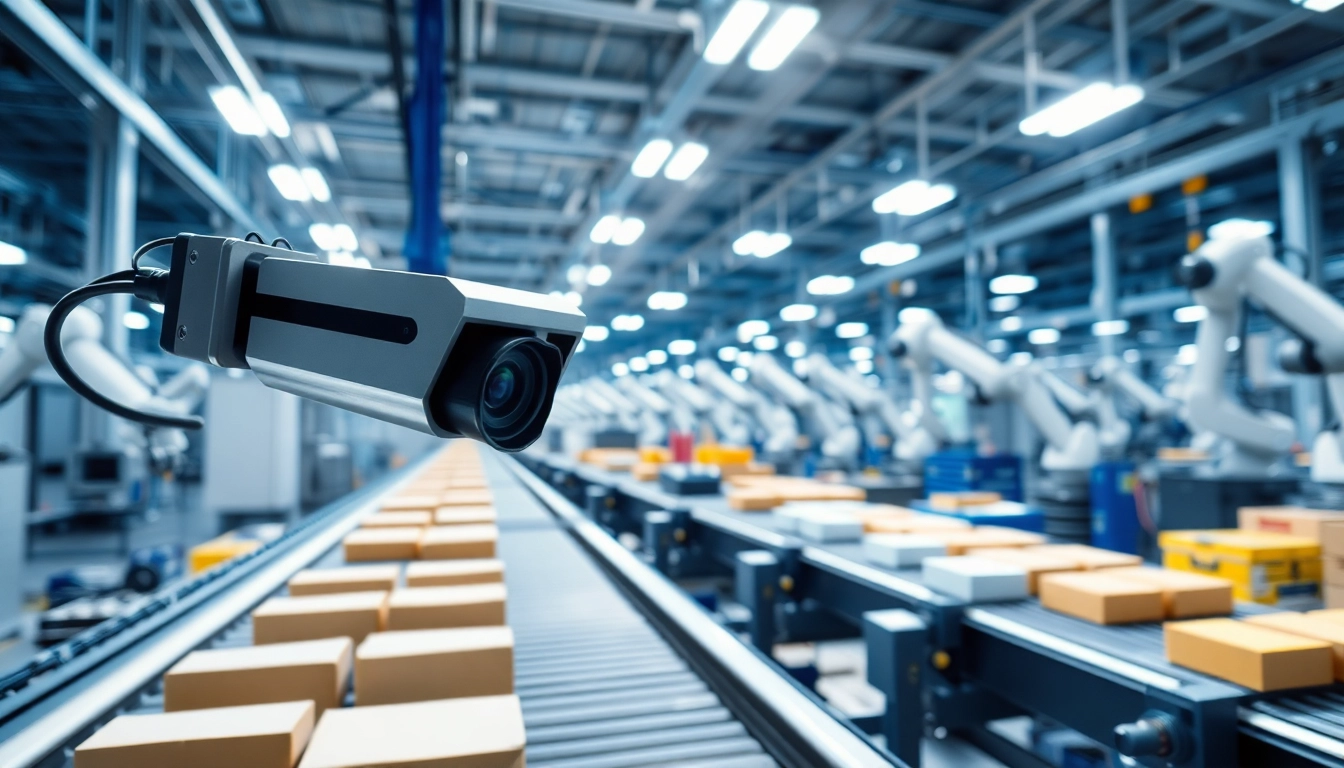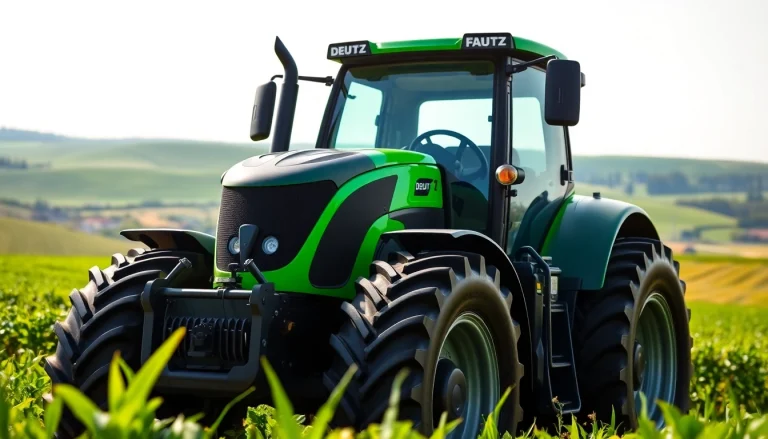1. What is Machine Vision?
Machine vision is a technology that empowers machines to interpret visual information from the world around them, mimicking human eyesight processes with incredible precision. By utilizing advanced algorithms and imaging technologies, machine vision systems analyze images, allowing for automated inspection and analysis in various industries. It serves as a critical component in the automation landscape, enhancing productivity and ensuring quality control across numerous applications.
1.1 Definition and Key Principles
At its core, machine vision is about enabling machines to observe and understand their environment through visual input. The functionality relies on three primary components: lighting, imaging, and processing. The first step typically involves capturing images using cameras equipped with specific features designed for the task at hand, such as high resolution or specialized filters. Following this, the images undergo processing through sophisticated software that extracts valuable data, identifies patterns, and makes instantaneous decisions based on the set parameters.
1.2 Components of Machine Vision Systems
A typical machine vision system comprises several essential components, each playing a vital role in the overall process:
- Cameras: The backbone of machine vision systems, cameras capture images of products or scenes, utilizing various technologies such as CMOS and CCD sensors.
- Lighting: Proper illumination is crucial for capturing clear images. Techniques like backlighting, front lighting, and structured lighting help enhance image quality for analysis.
- Processors: Image processing hardware or software interprets the captured images, employing algorithms that detect anomalies, measure dimensions, and classify images.
- Communication Interfaces: These are responsible for relaying data between the machine vision system and other components within the production line, such as robotics and control systems.
1.3 How Machine Vision Works
The operation of machine vision typically follows a sequence: first, an object is illuminated appropriately to optimize image capture. The camera then acquires images of the object, which are sent to the processor. Here, software applies algorithms to analyze the images, identifying critical features such as dimensions, defects, or barcodes. Finally, the system outputs results, which could include acceptance or rejection of products based on quality criteria, triggering appropriate responses from automated systems or operators.
2. Applications of Machine Vision
Machine vision finds utility across numerous sectors, delivering value in a variety of applications. Below are some key areas where machine vision excels:
2.1 Quality Control and Inspection
In industries like manufacturing and pharmaceuticals, stringent quality control is non-negotiable. Machine vision systems facilitate automated inspection, allowing for high-speed analysis of products, checking for defects, verifying dimensions, and ensuring compliance with standards. For instance, in a production facility, a machine vision system can monitor an assembly line, inspecting each product for flaws that may not be visible to the naked eye, thereby improving overall quality and reducing waste.
2.2 Robotics Integration and Automation
Integrating machine vision with robotics brings a new level of efficiency to automation. Robots equipped with machine vision capabilities are now able to perform complex tasks such as picking, sorting, and packaging. For example, in logistics operations, robots can identify packages, read barcodes, and determine optimal picking strategies, dramatically enhancing throughput rates while reducing operational errors.
2.3 Agriculture and Environmental Monitoring
The application of machine vision in agriculture is transforming how we manage farming practices. Systems can analyze crop health through imaging, allowing farmers to detect diseases or nutrient deficiencies early. Moreover, machine vision contributes to environmental monitoring by analyzing landscape images, assessing vegetation health, and tracking changes in habitats, supporting conservation efforts.
3. Benefits of Implementing Machine Vision
The deployment of machine vision provides a multitude of benefits that extend beyond mere efficiency gains. Here are some of the primary advantages:
3.1 Increased Efficiency and Accuracy
Machine vision operates at speeds and accuracies that far exceed human capabilities. By automating visual inspection processes, companies can eliminate human error, drastically increasing throughput and consistency across production lines. According to studies, machine vision can achieve inspection speeds that are ten times faster than manual checks, leading to significant productivity gains.
3.2 Cost-Effectiveness in Production
While the initial investment in machine vision technology can be considerable, the long-term savings are substantial. Reduced defect rates lead to fewer returns and reworks, which translates into lower operational costs. Furthermore, automated systems reduce labor costs associated with manual inspections, and many organizations report returns on investment (ROI) within a few months of implementation.
3.3 Enhanced Data Collection for Insights
Machine vision systems serve not only as inspection tools but also as data-gathering systems. They can log data on product dimensions, defect rates, and environmental conditions continuously, providing invaluable insights into production trends and opportunities for improvements. This data-driven approach allows organizations to fine-tune their operations based on real-time analytics.
4. Challenges in Machine Vision Technology
Despite the myriad advantages, implementing machine vision technology is not without challenges. Organizations must navigate a range of technical and operational hurdles:
4.1 Technical Limitations and Solutions
Machine vision systems depend heavily on various factors such as lighting conditions, camera resolution, and processing speed. Inadequate lighting can lead to subpar image quality, while poorly optimized algorithms may struggle to achieve desired accuracy. To address these issues, it’s essential to conduct thorough testing and optimize system parameters for specific tasks. Utilizing adaptive lighting and customizable algorithms can enhance system performance.
4.2 Integration with Existing Systems
Integrating machine vision systems with pre-existing processes can be complex, especially in established facilities. Compatibility issues with legacy systems and changes in workflow can hinder implementation. A strategic approach involving phased integration, proper training, and a thorough understanding of existing systems can help bridge the gap, ensuring a smoother transition.
4.3 Addressing Variability in Production
Inconsistent production environments can undermine machine vision effectiveness. Variability in product features, dimensions, and surface conditions can lead to incorrect analyses. Implementing adaptive learning models that improve system accuracy over time based on incoming data examples will help address these challenges, boosting overall system resilience.
5. Future Trends in Machine Vision
The landscape of machine vision is rapidly evolving, influenced by advancements in technology and changing industry demands. Key future trends include:
5.1 AI and Machine Learning Integration
Integrating artificial intelligence (AI) and machine learning into machine vision systems will significantly enhance their capabilities. AI algorithms can analyze vast datasets, detect complex patterns, and enable predictive maintenance, empowering organizations to proactively address issues before they escalate.
5.2 Advances in Imaging Technologies
The relentless progress in imaging technologies will yield better resolution cameras, advanced sensors, and new lighting techniques. Techniques like hyperspectral imaging and 3D vision systems will provide more detailed analyses, expanding the applications of machine vision into new territories, such as healthcare diagnostics and autonomous vehicles.
5.3 The Role of Machine Vision in Industry 4.0
As Industry 4.0 continues to gain traction, machine vision will play an integral role in creating smart factories. Real-time data integration with automated systems will enhance production agility and customization, enabling manufacturers to respond quickly to market demands while maintaining high quality and efficiency.








